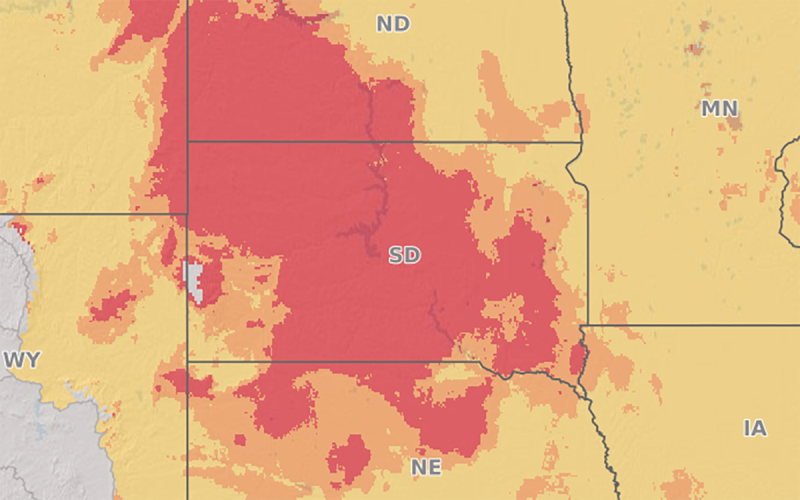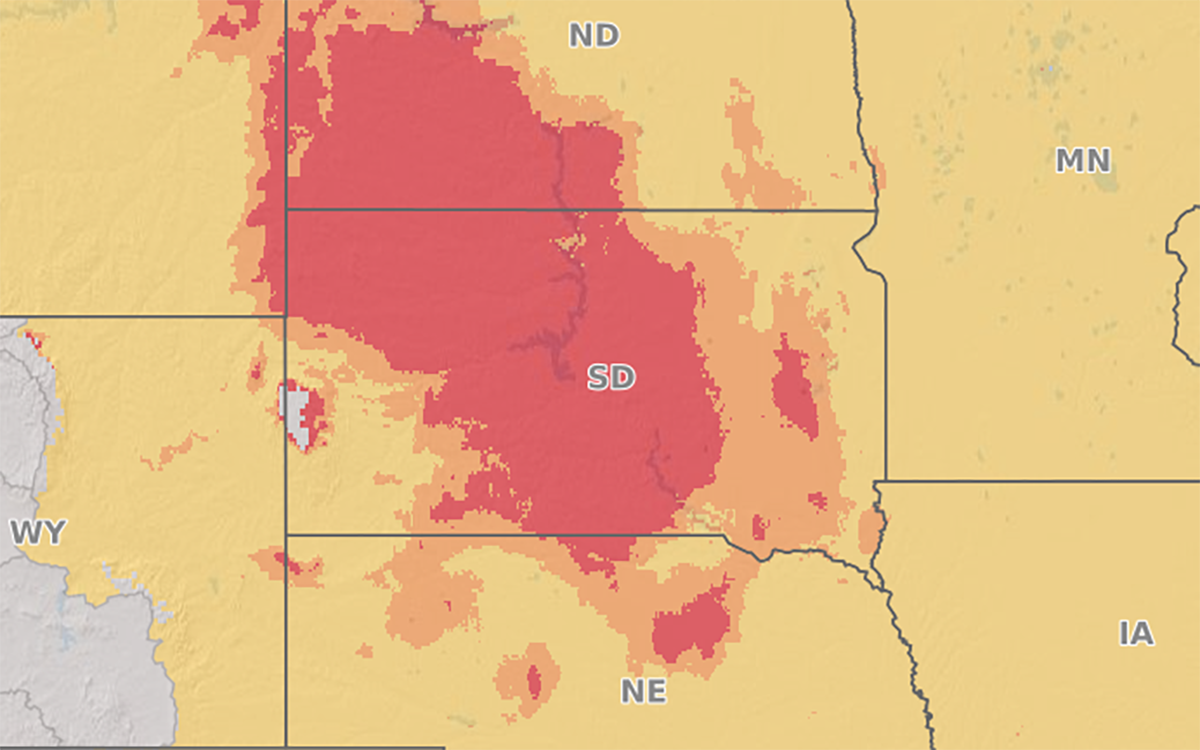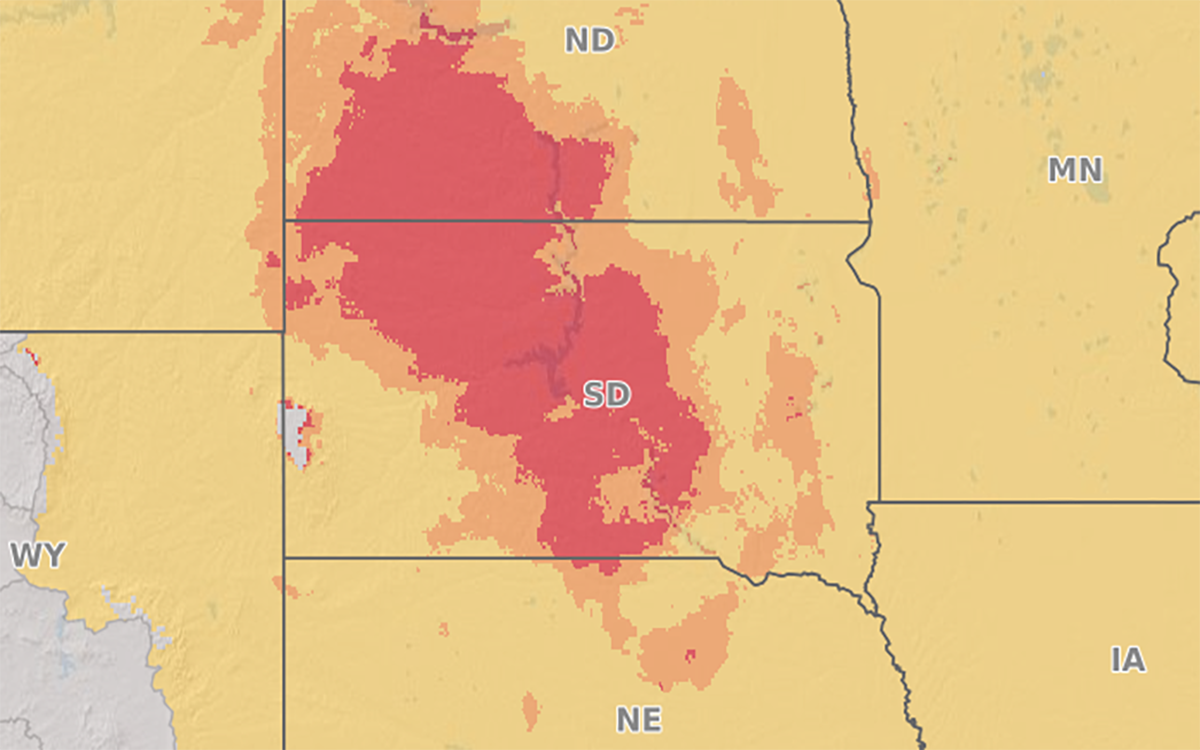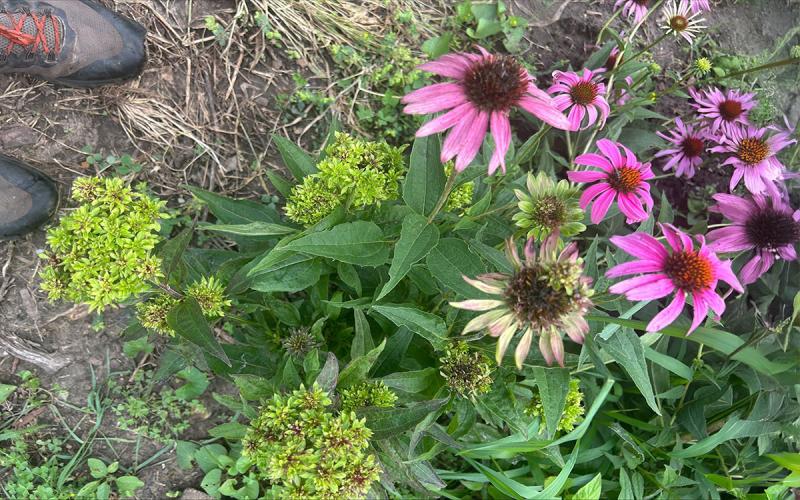
Written collaboratively by Madalyn Shires Ciera Kotaska, and Dalitso Yabwalo.
Fusarium head blight (FHB), also known as scab, is a fungal disease caused by Fusarium graminearum, which infects wheat heads during flowering, where the infected spikelets are bleached. Infection can spread to neighboring spikelets and plants. The infection of each spikelet causes the wheat kernels to become shriveled and discolored, resembling a tombstone, thereby reducing yield. Tombstone wheat kernels are also contaminated with mycotoxins.
Recent weather conditions across South Dakota have provided the environment needed for FHB to begin infection. As winter wheat is approaching flowering, it is important to continue to monitor the Fusarium Risk Tool to determine the risk of FHB infection in your area and when to take the appropriate management actions. As of today, May 29, 2025, much of South Dakota is under moderate or high risk of FHB infection (Figure 1). The forecast maps for June 2, 2025 (Figure 2) and June 4, 2025 (Figure 3) show continued risk for FHB infection.



